How to clean your coat at home?

A coat is an irreplaceable piece of clothing in the life of every resident of the metropolis. Despite the increased popularity of outerwear made of waterproof materials, classic models do not lose their relevance. And even difficult care does not scare buyers. Due to the large selection of styles, colors and styles, most people in the demi-season prefer this particular outerwear.
In order for your favorite coat to last more than one year, you need to properly care for it. And it is not always necessary to go to expensive dry cleaners; you can return the original appearance of outerwear to your clothes yourself at home.

General Tips
Improper cleaning at home can ruin your coat. A chic thing requires a careful approach. With regular care and the right choice of cleaning, your favorite coat will last for many seasons.
The coat must be cleaned not just once a season when changing outerwear, but everydayespecially if you wear it daily. To remove dirt and dust that has accumulated during the day, before this becomes a problem, it is enough to brush over the fabric in the evening with a dry brush. This routine procedure alone is enough to keep the garment looking its original even towards the end of the season.

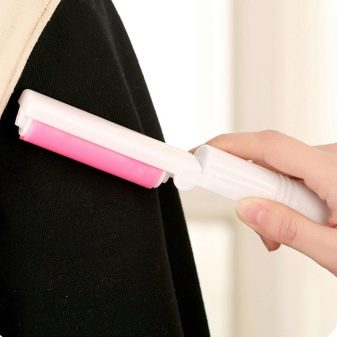
A special device will help you not only to clean the fabric and remove fluff, but also prevent the appearance of pellets that can spoil the appearance of even the most expensive and sophisticated coat.
But only "general" cleaning will help to remove significant contamination. Such care must be carried out at least once a season and even when there are no particular complaints about the quality of the coat.

Cleaning types
There are three main types of cleaning. It is important to familiarize yourself with the recommendations for fabric care in advance, it is necessary to take into account the composition of the fabric, the recommended water temperature and the acceptable options for drying and ironing. For each product, the cleaning method is selected individually, depending on the material and contamination.

The main types of cleaning:
- For dry cleaning, use a soft bristled brush or sponge. And with the use of special powders and aerosols, the coat can be treated and fine dirt, dust and hairs can be removed. In this case, contact with water is not allowed.
- Wet cleaning is used on selected areas of the coat when it is necessary to get rid of a stain or to clean the collar, sleeves and pockets. In this case, cleaning agents and a damp soft-bristled sponge are used. Wet cleaning also includes the use of a steam iron, with which you can clean your coat without washing.
- Washing is suitable only for certain types of coats, which contain at least 30% synthetic fibers. This will definitely be indicated in the manufacturer's recommendations. For some items, you can select a delicate machine wash in combination with cleaning powders or liquid detergents. Therefore, before you wash your coat yourself, check the manufacturer's recommendations on the label.
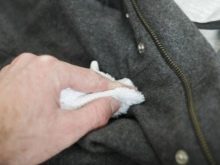

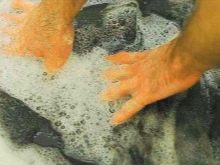
For cashmere, drape and wool garments, only dry or wet cleaning is suitable. But, as a rule, manufacturers combine several types of threads when making clothes, therefore some models can even be machine washed on the delicate cycle. And gel-like liquid cleaners are best suited for this.
If you decide to wash your coat with your own hands, then select the optimal temperature based on the manufacturer's recommendations. As a rule, the water temperature should not exceed 30 ° C. And if the pollution is not so strong, you can use colder water. The cleaning agents must be dissolved in water so that the powder particles do not cling to the lint of the fabric.
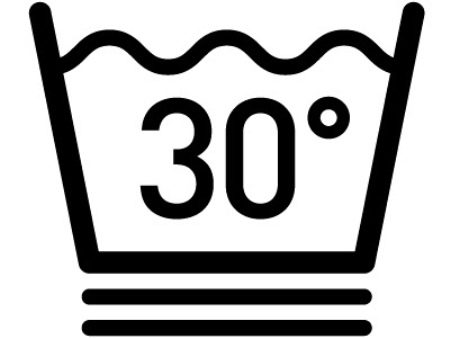
Dip the coat gently and gently into the powder or vanish solution. Do not make sudden movements during washing, so as not to deform the fabric, hard brushes and strong friction are also prohibited. Then rinse the coat thoroughly without using a strong water pressure.
In no case should you squeeze out; you can remove some of the water with a large dry blanket. And after that, place the product on a horizontal surface, but in such a way that the coat does not stretch under its own weight, and wait for the water to drain. So you do not remember and do not deform the material and the product itself, even after washing, will not require ironing. Avoid direct sunlight and contact with heating devices.
If the manufacturer has not excluded machine wash from the care recommendations, then select the delicate mode at 30 degrees and turn off the spin mode.


How and with what to clean?
In order to properly and quickly put the winter coat in order or clean the autumn coat from dirt at home, you need to follow a few simple rules. But before that, you need to properly prepare your clothes:
- Check the contents of all pockets and shake the clothing. Remove the detachable parts and the belt, the painted buttons.
- In bright daylight, inspect your coat for smudges. Typically, the most contaminated areas are sleeves, collars and areas near pockets. Also carefully inspect the inner lining - it requires a separate additional cleaning.
- Use a brush, adhesive tape and special rollers to remove fluff and small pellets.
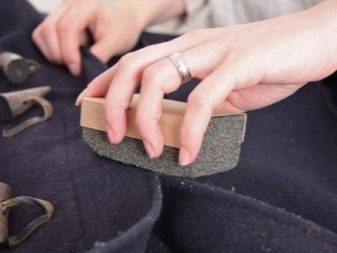
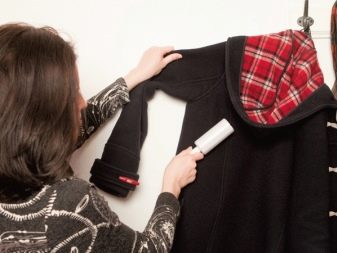
- And no matter how trite it sounds - carefully read the care recommendations indicated on the coat label. Because for each individual type of material, certain methods must be applied.
- Before using a cleaning agent, test it on a small area of the material; the fabric should not change color, texture or appearance.
- For single stains, apply from edge to center to avoid spreading contamination.

An alcohol solution will help to wipe off food and drink stains on your own. Alcohol and water are mixed in a 2: 1 ratio, with the help of a sponge, the resulting composition is applied to the stain and drops are removed smoothly, with light circular movements until complete cleansing. If this method does not work, mix glycerin (you can buy it at the pharmacy) with ammonia in a 1: 2 ratio until you get a mushy substance. Apply the resulting mixture in an even layer on the stains and leave for a while. Then scrub the area with a brush, dab the stain with soapy water, and complete the procedure with a thorough cleaning of the coat with a damp brush.
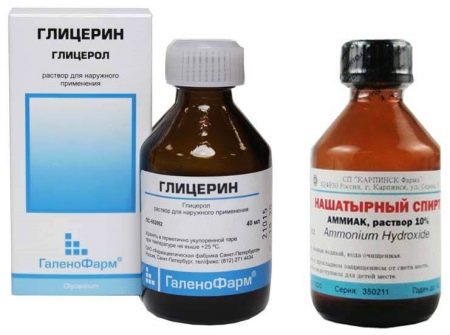
Also, ammonia and saline (1: 4 ratio) can remove greasy shine and equalize scuffs. The resulting solution is applied to the area for 20-30 minutes, after which it is removed with a brush. A solution of ammonia with vinegar will do an excellent job. But remember that when working, it is important to avoid getting such mixtures on open skin areasTherefore, wear rubber gloves and use a sponge and brush designed specifically for this purpose.
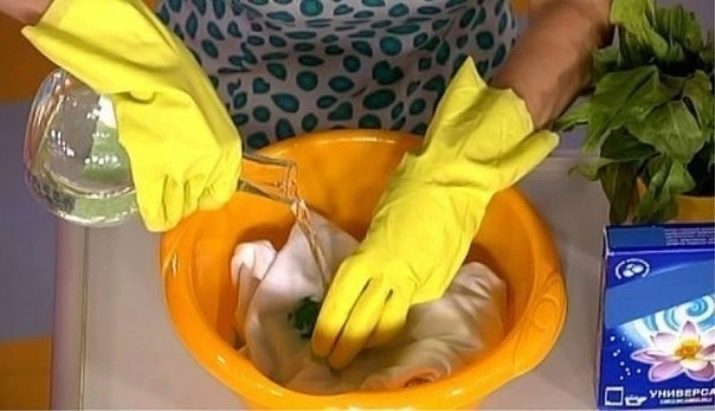
You can use vinegar and ammonia to remove tough stains from your bolognese coat and get rid of shiny, shiny, greasy areas. This solution is mixed in a 1: 1 ratio and applied generously to all areas that require cleaning. The smell will be very persistent and unpleasant, therefore wash your coat after the procedureif allowed by the manufacturer, or wipe with a damp sponge and ventilate in the fresh air.
You can remove old stains with a gentle shampoo or a non-aggressive chlorine-free stain remover. Be guided by the manufacturer's recommendations, and there will be no trace of contamination. Before doing this, you can use a steamer - hot directed air will make the stain more pliable and help get rid of it faster.
If soapy streaks form, they can be removed with a soft, damp sponge.
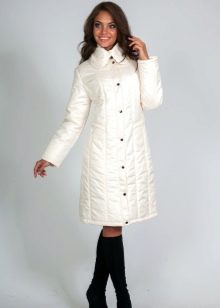


A suede coat is afraid of moisture, so use a sponge soaked in soapy water. This cleaning must be done very quickly so that the material does not lose its shape and color. Use a suede brush, it will help to raise the villi and make the material more velvety and attractive.
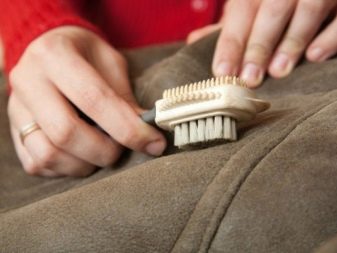

To make your favorite leather coat happy for a long time, it is important to properly care for it and periodically treat the surface with a solution with glycerin. Particular attention should be paid to areas that are subject to strong friction: collars, sleeves, cuffs and areas near pockets. A soap solution will help to restore the original shine to an old coat made of genuine leather. To do this, mix a gentle, non-corrosive and chlorine-free cleaning agent with a small amount of ammonia and wipe the entire product completely. Then, remove any soapy streaks with a damp, soft sponge dipped in water.
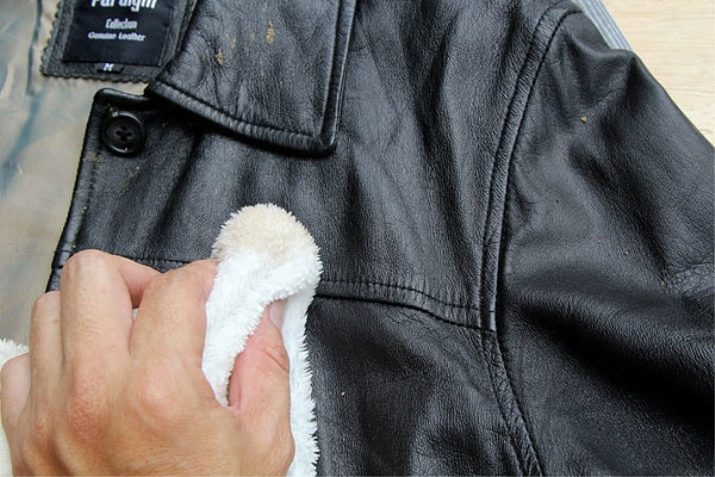
The pellets artificially "age" the coat, and the untidy appearance of the clothes affects the general position of a person. At home, without dry cleaning, there are two ways to get rid of the spools: using a shaving machine or a special machine. When working with the blade, it is important to work very carefully so as not to cut the material. Using a typewriter, you do not have to worry about safety, a special device cuts off only the pellets and leaves behind a smooth and beautiful finished fabric.
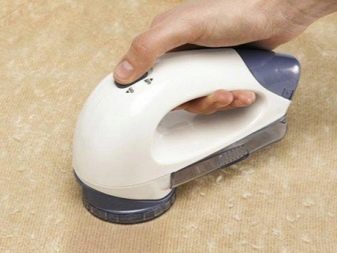
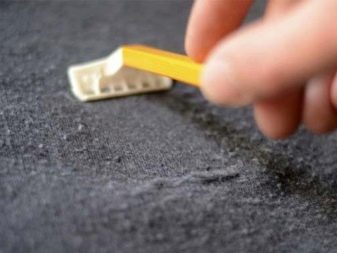
Polyester and bouclé coats are very popular with modern designers.In the demi-season, this type of outerwear can be found in every brand store, as well as a velor coat, which, although not included in the list of everyday items, is available in the wardrobe of every fashionista. Velor, polyester and boucle are less whimsical to care for. Such products can be machine washed with a delicate hand wash. But it is important to observe the temperature regime within 30 ° С. and use spin at minimum speed.
But if the product contains natural fibers, such as, for example, a bouclé coat has natural and synthetic threads, then you should take care of the clothes more carefully and carefully.

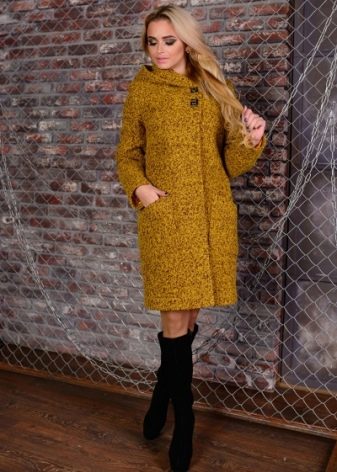
A 100% cashmere coat can only be cleaned with a damp sponge. Before this, it is necessary to completely treat the product with a dry soft brush, and then treat the entire surface with a weak soap solution.
To clean the woolen coat, you must use a special wool cleaner. The dry powder is applied to the product previously cleaned with a brush, and after a couple of hours, the residues of the product are shaken off with a sharp movement. Such a simple method does not require much effort and helps to properly and quickly tidy up the winter coat yourself. It is important to remember that drape and cashmere coats require gentle and neat cleaning, therefore, if the recommendations received did not work, then it is better to contact the dry cleaner.
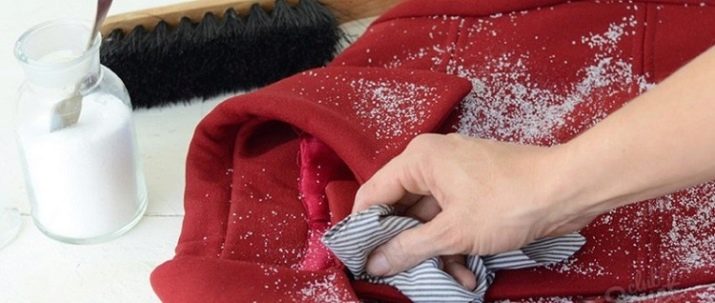
How to remove stains?
In most cases, there is no need to clean the entire product; often it is enough to remove only individual stains. For partial cleaning, special attention should be paid to sleeves, cuffs and areas around pockets.
To get rid of a fresh stain will help salt... If you have just stained your coat, sprinkle generously with salt on the stained area, the crystals will quickly absorb the dirt and you will only have to clean the fabric with warm water, but only if the manufacturer allows wet cleaning.
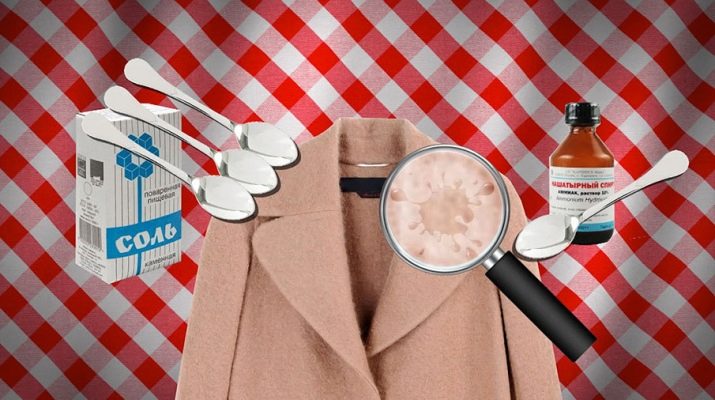
Traces of fuel oil or oil will help remove dishwashing detergentswhich are known to do a great job with fat. To do this, apply generously and rub the liquid onto the contaminated area, lather and leave for half an hour. If the coat is not afraid of moisture, then you can use warm water for subsequent soaking of the product. Vigorously, but not harshly, brush the stain and remove excess cleaning agent.
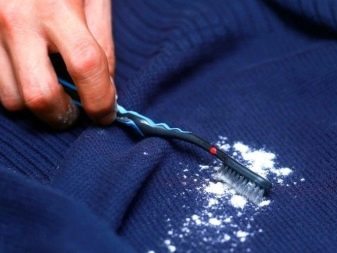
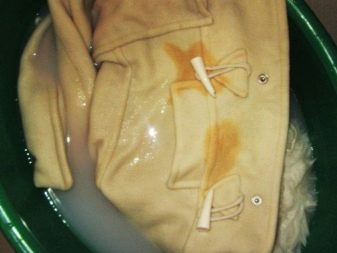
It can be difficult to clean a coat stained with gouache. Water-based paint absorbs very quickly into fabric. Most of the pigment can be removed with cold water using a damp sponge and dry paper towels. Carry out cleaning in several stages: you need to moisten the stain abundantly, then remove excess water with a napkin - and this must be repeated several times. Then use any liquid cleaner on the area.
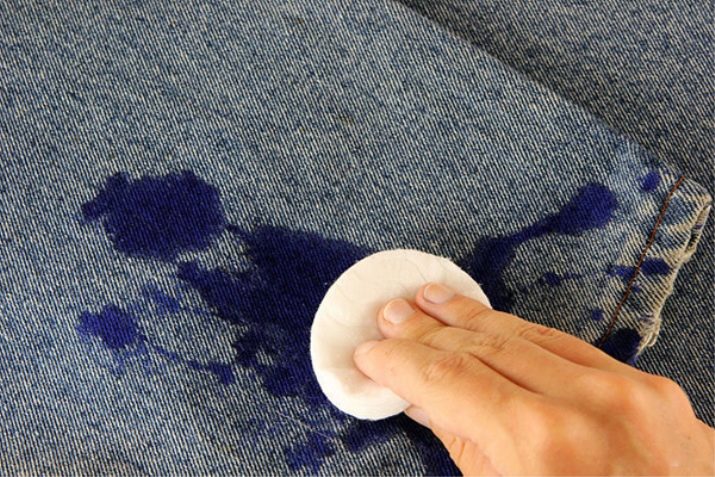
A saline solution helps to get rid of the shine. It is only necessary to dissolve the salt in water and apply the resulting liquid to the contaminated area with a sponge. Then remove the excess with a dry cloth.
Kerosene or gasoline will help remove greasy stains and clean shiny areas. But it is necessary to use a solvent only from the wrong side. Before you start cleaning, prepare a paper towel, be sure to wear gloves and use a sponge. Apply a tissue, talcum or baby powder to the stain on the outside of the coat. This will allow the powder to absorb the grease stain and all the dirt will be absorbed into the tissue. Carry out these manipulations until the contamination is completely removed. Then use a stiff dry brush to brush off any excess powder.

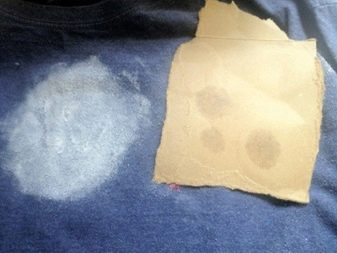
Talcum powder or baby powder can also help clean a greasy collar. Apply a generous amount of powder to the area and leave the coat in a horizontal position all day. Then use a special sponge with rubber fibers to remove excess talcum powder. If the shiny area remains, then repeat the procedure.
From constant humidity in the mid-season, a coat can become a source of unpleasant odors, which will be difficult to get rid of. It is important not to despair and be patient in order to return your favorite product to its original appearance and pleasant smell. To remove the smell of sweat and mold, special fabric fresheners. The aerosol is sprayed on the underarm area and inner lining, then the coat is weathered for several hours in a dry, well-ventilated area.


We take into account the colors
A white coat looks incredibly stylish, bold and elegant, and will never go out of style. And at the same time, it is a very impractical clothing color. Any slightest pollution and small stain immediately catches the eye, looks untidy and can spoil the impression of you as a whole. But even the most difficult contamination can be dealt with on your own.
White and light coat can be cleaned with baby powder. Rub the powder gently into the stain and let sit for 10 hours. Remove residue with a soft brush, and if the stain remains, repeat the procedure.
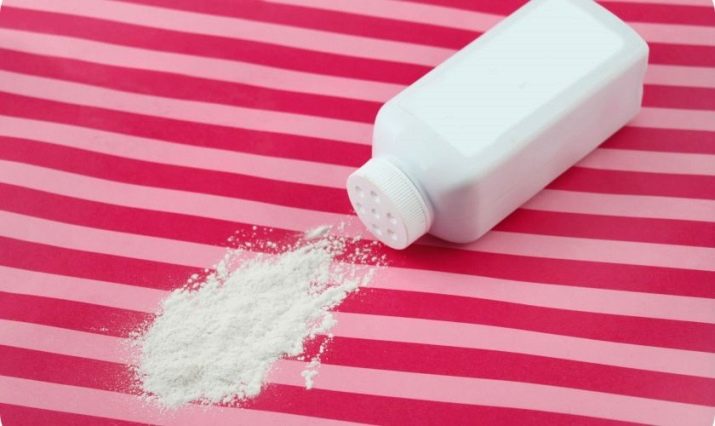
Any fresh stains from colored and light-colored fabrics can be removed with salt or dry tea. Crystals and leaves quickly absorb moisture and prevent stains from remaining in the fibers.
A bright coat of rich green, blue, pink color can be cleaned with gasoline or ammonia. The main thing to pay attention to is that there are no stains on the fabric from the newly removed stains.
Black and dark coat can be quickly cleaned using soapy water or green tea. In this case, it is enough to apply the funds with a cotton pad to areas with spots. But on a dark fabric, all the dirt is not so clearly visible, and small villi and pellets can become the main problem. You can prevent them by using an adhesive tape roller every day. And periodically cleaning with a blade or a special machine to remove some visible flaws.
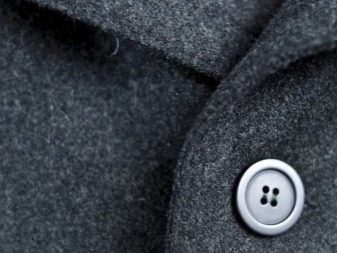
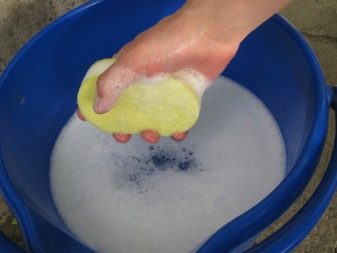
If you follow the simple tips and recommendations of the manufacturer, you can keep your favorite coat in its original form for a long time.
We recommend watching a video in which an outerwear expert explains how to properly care for, clean and store your coat.








